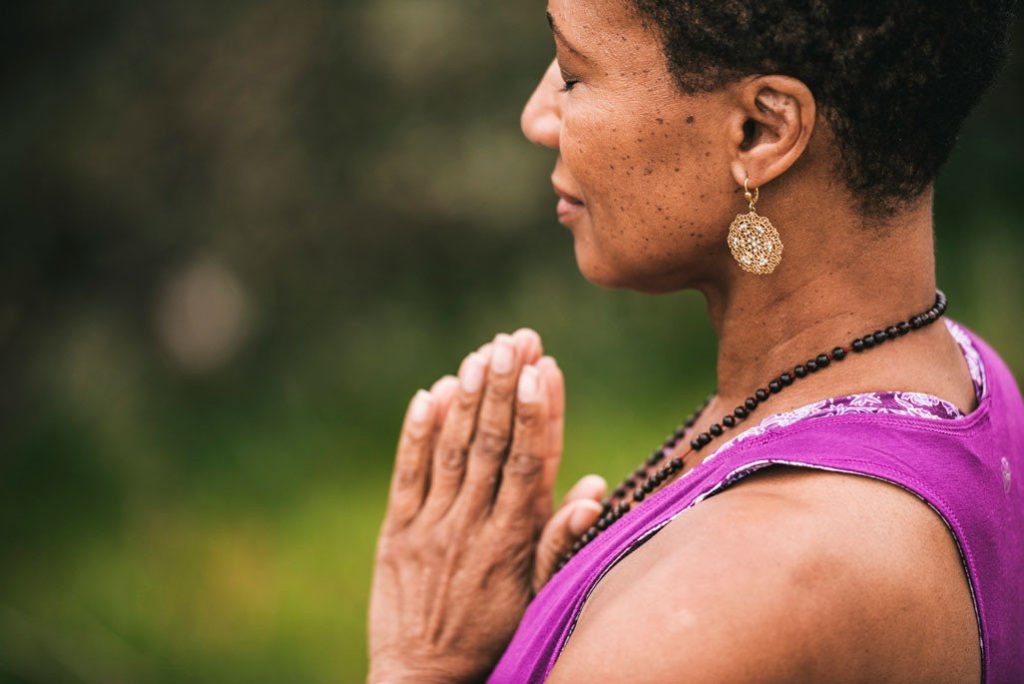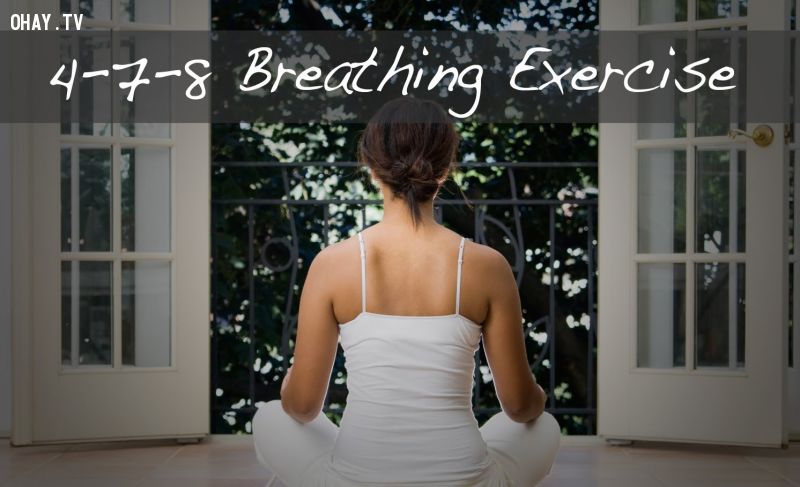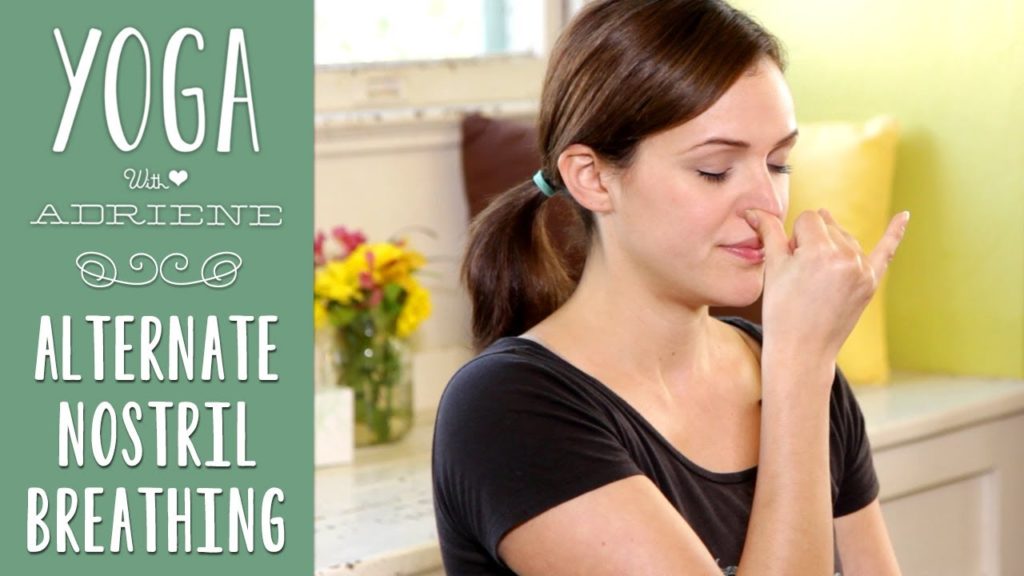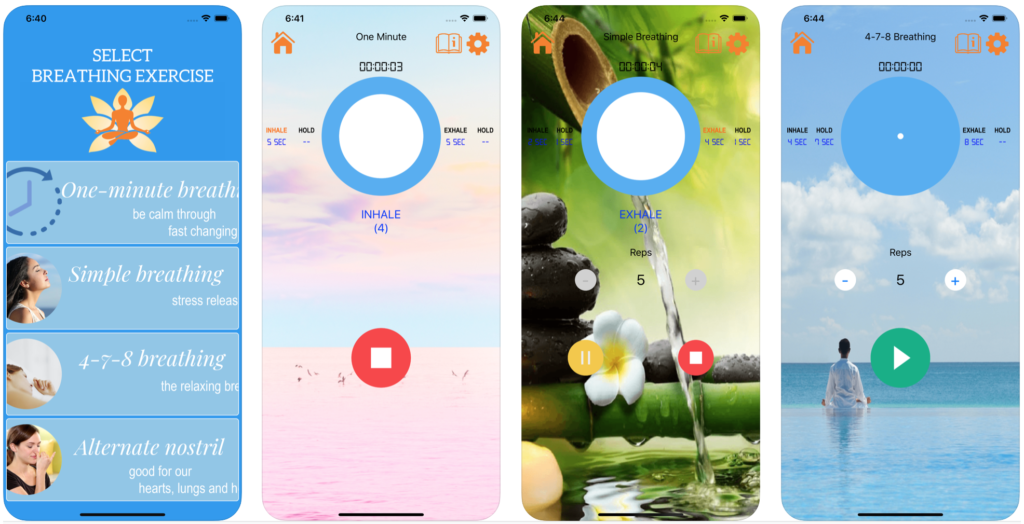Take a deep breath in. Now let it out. You may notice a difference in how you feel already. Your breath is a powerful tool to ease stress and make you feel less anxious. Some simple breathing exercises can make a big difference if you make them part of your regular routine.
Before you get started, keep these tips in mind:
- Choose a place to do your breathing exercise. It could be in your bed, on your living room floor, or in a comfortable chair.
- Don’t force it. This can make you feel more stressed.
- Try to do it at the same time once or twice a day.
- Wear comfortable clothes.
Many breathing exercises take only a few minutes. When you have more time, you can do them for 10 minutes or more to get even greater benefits.
Find below list of breathing techniques for you to practice:
- One-minute Breathing
- Simple Breathing
- 4-7-8 Breathing Technique
- Alternate Nostril Breathing (Nadi Shodhana)
1. One-minute Breathing

Breath and productivity go hand in hand. Incorrect breathing not only reduces your productivity levels; it can also lead to an increase in your heart rate, the same way sleep apnea quickens the pulse as the body struggles to take in oxygen.
Yoga breathing techniques offer a practical solution. Yoga has become a common form of stress management and exercise for overworked executives, and you can practice yogic breathing exercises without going to a yoga class.
TRY THIS 1-MINUTE BREATHING EXERCISE TO BOOST BLOOD OXYGEN AND PRODUCTIVITY
Professional yoga therapist Felice Rhiannon uses this one-minute breath practice whenever she’s feeling frazzled or restless. It is a centering activity based on a slow inhalation and an incremental increase in the length of exhalations.
- Inhale to the count of two
- Exhale to the count of two
- Inhale to the count of two
- Exhale to the count of three
- Inhale to the count of two
- Exhale to the count of four
- Inhale to the count of two
- Exhale to the count of five
Repeat several times, then return to your normal breathing. Your improved breathing will help regulate the oxygen flow in your blood, making you more alert. With a sharper focus, you can stay on task and make fewer mistakes, saving you time in the long run.
2. Simple Breathing

Yes, it seems obvious, but not all breaths are created equal. A great, simple breathing exercise for calming both the nervous system and the overworked mind is a timed breath where the exhale is longer than the inhale. When your exhale is even a few counts longer than your inhale, the vagus nerve (running from the neck down through the diaphragm) sends a signal to your brain to turn up your parasympathetic nervous system and turn down your sympathetic nervous system.
The sympathetics command your fight or flight response, and when they fire, your heart rate and your breathing speed up, and stress hormones like cortisol start pumping through your bloodstream, preparing your body to face a threat. If the threat is, “A lion is chasing me and I need to run away,” this is helpful. If the threat is, “I am late to work” or, “I’m so upset with my mom,” this is not particularly helpful, and in fact it can be damaging – when cortisol is elevated for too long or too frequently it disturbs all the hormonal systems of the body.
The parasympathetics, on the other hand, control your rest, relax, and digest response. When the parasympathetic system is dominant, your breathing slows, your heart rate drops, your blood pressure lowers as the blood vessels relax, and your body is put into a state of calm and healing.
Putting your body in a parasympathetic state is easy. Pick a count for your inhale and a count for your exhale that is a little longer. I like starting with 2 counts in, and 4 counts out, with a one count pause at the top of the inhale and a one count pause at the bottom of the exhale.
Step by step instructions:
To begin, sit still and tall somewhere comfortable. Close your eyes and being breathing through your nose.
Then, inhale for a count of two… hold the breath in for a count of one… exhale gently, counting out for four… and finish by holding the breath out for a count of one. Keep your breathing even and smooth.
If the 2-4 count feels too short try increasing the breath lengths to 4 in and 6 out, or 6 in and 8 out, and so on. But if longer breaths create any anxiety there is no need to push yourself. The most important thing is that the exhale is longer than the inhale, not the absolute length of the breath.
Set a timer and breathe this way for at least five minutes! You will see a difference in your mood.
3. 4-7-8 Breathing Technique

The 4-7-8 breathing technique, also known as “relaxing breath,” involves breathing in for 4 seconds, holding the breath for 7 seconds, and exhaling for 8 seconds.
This breathing pattern aims to reduce anxiety or help people get to sleep. Some proponents claim that the method helps people get to sleep in 1 minute.
There is limited scientific research to support this method, but there is a lot of anecdotal evidence to suggest that this type of deep, rhythmic breathing is relaxing and may help ease people into sleep.
In this article, we look at how to perform this breathing technique, why it might work, and apps that could help.
What is 4-7-8 breathing?
The 4-7-8 breathing technique requires a person to focus on taking a long, deep breath in and out. Rhythmic breathing is a core part of many meditation and yoga practices as it promotes relaxation.
Dr. Andrew Weil teaches the 4-7-8 breathing technique, which he believes can help with the following:
- reducing anxiety
- helping a person get to sleep
- managing cravings
- controlling or reducing anger responses
Dr. Weil is a celebrity doctor and the founder and director of the University of Arizona Center for Integrative Medicine.
How to do it
Before starting the breathing pattern, adopt a comfortable sitting position and place the tip of the tongue on the tissue right behind the top front teeth.
To use the 4-7-8 technique, focus on the following breathing pattern:
- empty the lungs of air
- breathe in quietly through the nose for 4 seconds
- hold the breath for a count of 7 seconds
- exhale forcefully through the mouth, pursing the lips and making a “whoosh” sound, for 8 seconds
- repeat the cycle up to 4 times
Dr. Weil recommends using the technique at least twice a day to start seeing the benefits sooner. He also suggests that people avoid doing more than four breath cycles in a row until they have more practice with the technique.
A person may feel lightheaded after doing this for the first few times. Therefore, it is advisable to try this technique when sitting or lying down to prevent dizziness or falls.
The total number of seconds that the pattern lasts for is less important than keeping the ratio. A person who cannot hold their breath for long enough may try a shorter pattern instead, such as:
- breathe in through the nose for 2 seconds
- hold the breath for a count of 3.5 seconds
- exhale through the mouth for 4 seconds
As long as a person maintains the correct ratio, they may notice benefits after several days or weeks of doing 4-7-8 breathing consistently one to two times a day.
According to some advocates of 4-7-8 breathing, the longer and more frequently a person uses the technique, the more effective it becomes.
There is limited clinical research to support these claims about 4-7-8 breathing or other breathing techniques. The evidence is limited to anecdotal reports from satisfied users.
How it works and benefits
There is some evidence to suggest that deep breathing techniques have a positive impact on a person’s anxiety and stress levels.
For example, a 2011 review article in Health Science Journal identifies some of the potential health benefits of deep breathing techniques, particularly for deep breathing from the diaphragm. These possible benefits include:
- decreased fatigue
- reduced anxiety
- reduced symptoms of asthma in children and adolescents
- better stress management
- reduced hypertension
- reduced aggressive behavior in adolescent males
- improved migraine symptoms
Studies suggest that 6 weeks of practicing pranayamic breathing, or breathing that focuses on controlling breath movement, may have a positive effect on a person’s heart rate variability, which correlates with stress, and also improve cognition and anxiety.
Uses

There is an association between certain breathing techniques, such as 4-7-8 breathing, and other relaxation techniques. Some people couple this breathing with the following practices:
- guided imagery
- progressive muscle relaxation
- repetitive prayer
- yoga, tai chi, and qigong
- mindfulness meditation
The most common uses of 4-7-8 breathing are for reducing stress and anxiety. With frequent use, it reportedly becomes more effective in helping a person manage their stress levels.
This improvement is in contrast to anti-anxiety drugs, which tend to lose some of their effectiveness over time as the body adjusts to them.
4. Alternate Nostril Breathing (Nadi Shodhana)

Nadi Shodhana, or “alternate nostril breathing,” is a simple yet powerful technique that settles the mind, body, and emotions. If you’re feeling stressed, follow these steps to help you find your center.
Nadi Shodhana, or “alternate nostril breathing,” is a simple yet powerful technique that settles the mind, body, and emotions. You can use it to quiet your mind before beginning a meditation practice, and it is particularly helpful to ease racing thoughts if you are experiencing anxiety, stress, or having trouble falling asleep.
There are several different styles of Nadi Shodhana, but they all serve the purpose of creating balance and regulating the flow of air through your nasal passages. In fact, the term Nadi Shodhana means “clearing the channels of circulation.”
Benefits of Alternate Nostril Breathing
With just a few minutes of alternate nostril breathing, you can restore balance and ease in the mind and body. Sometimes when we feel frazzled or find ourselves doing too many things at once, it’s because energetically, we are out of alignment. This breath is great for restoring that necessary balance.
In addition to calming the mind and reversing stress, alternate nostril breathing also:
- Improves our ability to focus the mind
- Supports our lungs and respiratory functions
- Restores balance in the left and right hemispheres of the brain, and clears the energetic channels
- Rejuvenates the nervous system
- Removes toxins
- Settles stress
Whether you’re nervous about a project or presentation, anxious about a conversation, or just generally stressed out, Nadi Shodhana is a quick and calming way to bring you back to your center. If you find it difficult to settle into your meditations, try moving through a few rounds first, then remain seated and shift directly into stillness; this should help to ground you before meditation.
Nadi Shodhana Practice
Next time you find yourself doing too many things at once, or you sense panic or anxiety begin to rise, move through a few rounds of alternate nostril breathing. It’s a great way to hit the reset button for your mental state.
- Take a comfortable and tall seat, making sure your spine is straight and your heart is open.
- Relax your left palm comfortably into your lap and bring your right hand just in front of your face.
- With your right hand, bring your pointer finger and middle finger to rest between your eyebrows, lightly using them as an anchor. The fingers we’ll be actively using are the thumb and ring finger.
- Close your eyes and take a deep breath in and out through your nose.
- Close your right nostril with your right thumb. Inhale through the left nostril slowly and steadily.
- Close the left nostril with your ring finger so both nostrils are held closed; retain your breath at the top of the inhale for a brief pause.
- Open your right nostril and release the breath slowly through the right side; pause briefly at the bottom of the exhale.
- Inhale through the right side slowly.
- Hold both nostrils closed (with ring finger and thumb).
- Open your left nostril and release breath slowly through the left side. Pause briefly at the bottom.
- Repeat 5-10 cycles, allowing your mind to follow your inhales and exhales.
Steps 5-9 represent one complete cycle of alternate nostril breathing. If you’re moving through the sequence slowly, one cycle should take you about 30-40 seconds. Move through 5-10 cycles when you’re feeling stressed, anxious, or in need of a reset button.
Tip: Consistency is helpful, so try to match the length of your inhales, pauses, and exhales. For example, you can start to inhale for a count of five, hold for five, exhale for five, hold for five. You can slowly increase your count as you refine your practice.
Which apps can I use for practicing these breathing techniques?
People who are interested in trying breathing techniques but unsure of their ability to self-regulate may wish to use an app to help them. People can find apps for various devices in the Apple and Google Play stores.
For example, Mindfulness Breathing is a free app for Apple products, which helps people practice all of these breathing techniques. Overall, the app has good reviews from people who have installed it. It also includes a feature to set reminders to use it regularly during the day.
